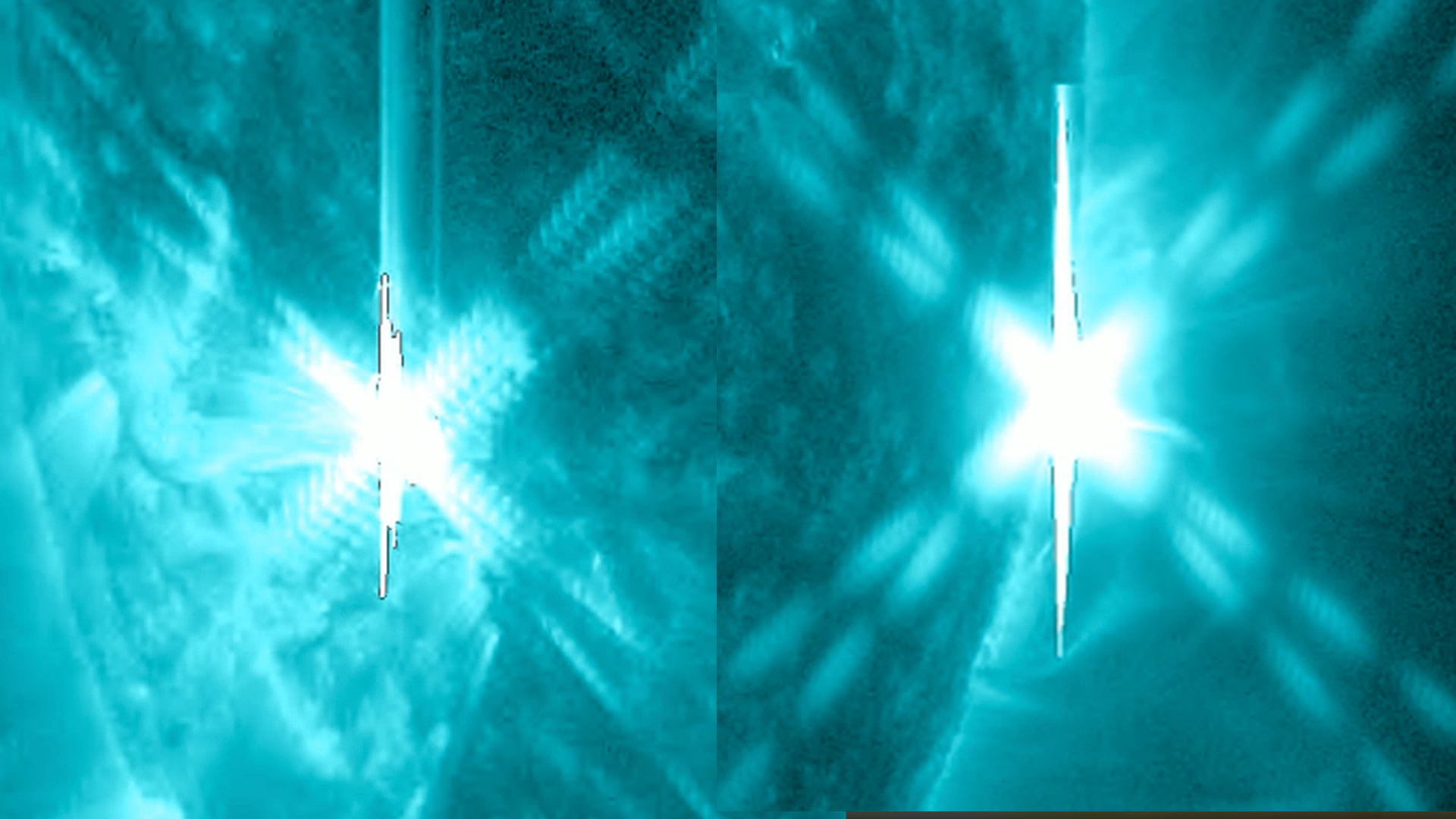The sun fires off 2 powerful X flares in less than 2 hours (video, photo)
Solar activity is expected to remain high this week.
The sun showcased its immense power yet again this morning (August 5), firing off not one but two X-class flares.
X flares are the strongest solar flare class. Today's first X blast, which launched from a sunspot called AR3767, reached its peak around 9:40 a.m. EDT (1340 GMT), clocking in at X1.7 on solar scientists' flare scale. Then, less than two hours later, the sunspot AR3780 fired off an X1.1 class solar flare, which peaked at 11:27 a.m. EDT (1527 GMT).
Solar flares are often accompanied by huge eruptions of solar plasma called coronal mass ejections (CMEs), which can cause geomagnetic storms if they hit Earth. These storms can have negative consequences, such as the disruption of power grids, but they can also supercharge the auroras, making these light shows more intense and extending them to lower latitudes than usual.
That's exactly what happened this past weekend, as a G3 (strong) geomagnetic storm brought the northern lights into view across parts of the U.S. West Coast.
Based on the location of AR3767, however, direct impacts from a CME (if one did indeed launch along with today's first X flare) are unlikely, the U.S. National Oceanic and Atmospheric Administration's Space Weather Prediction Center (SWPC) shared on X today. Today's second flare is currently being investigated for any impacts as of this afternoon.
Through the middle of the week (Aug. 7), SWPC scientists forecast that the flare activity will persist from three active sunspots — AR3772, AR374 and AR3780 — as they parade across the sun from left to right, remaining visible in our view of the solar disk.
Low-end geomagnetic storms also remain possible, but that could change, depending on how strong future solar storms are, and if any send CMEs in Earth's direction.
Breaking space news, the latest updates on rocket launches, skywatching events and more!

Meredith is a regional Murrow award-winning Certified Broadcast Meteorologist and science/space correspondent. She most recently was a Freelance Meteorologist for NY 1 in New York City & the 19 First Alert Weather Team in Cleveland. A self-described "Rocket Girl," Meredith's personal and professional work has drawn recognition over the last decade, including the inaugural Valparaiso University Alumni Association First Decade Achievement Award, two special reports in News 12's Climate Special "Saving Our Shores" that won a Regional Edward R. Murrow Award, multiple Fair Media Council Folio & Press Club of Long Island awards for meteorology & reporting, and a Long Island Business News & NYC TV Week "40 Under 40" Award.

